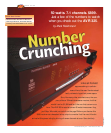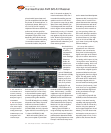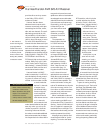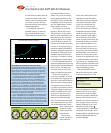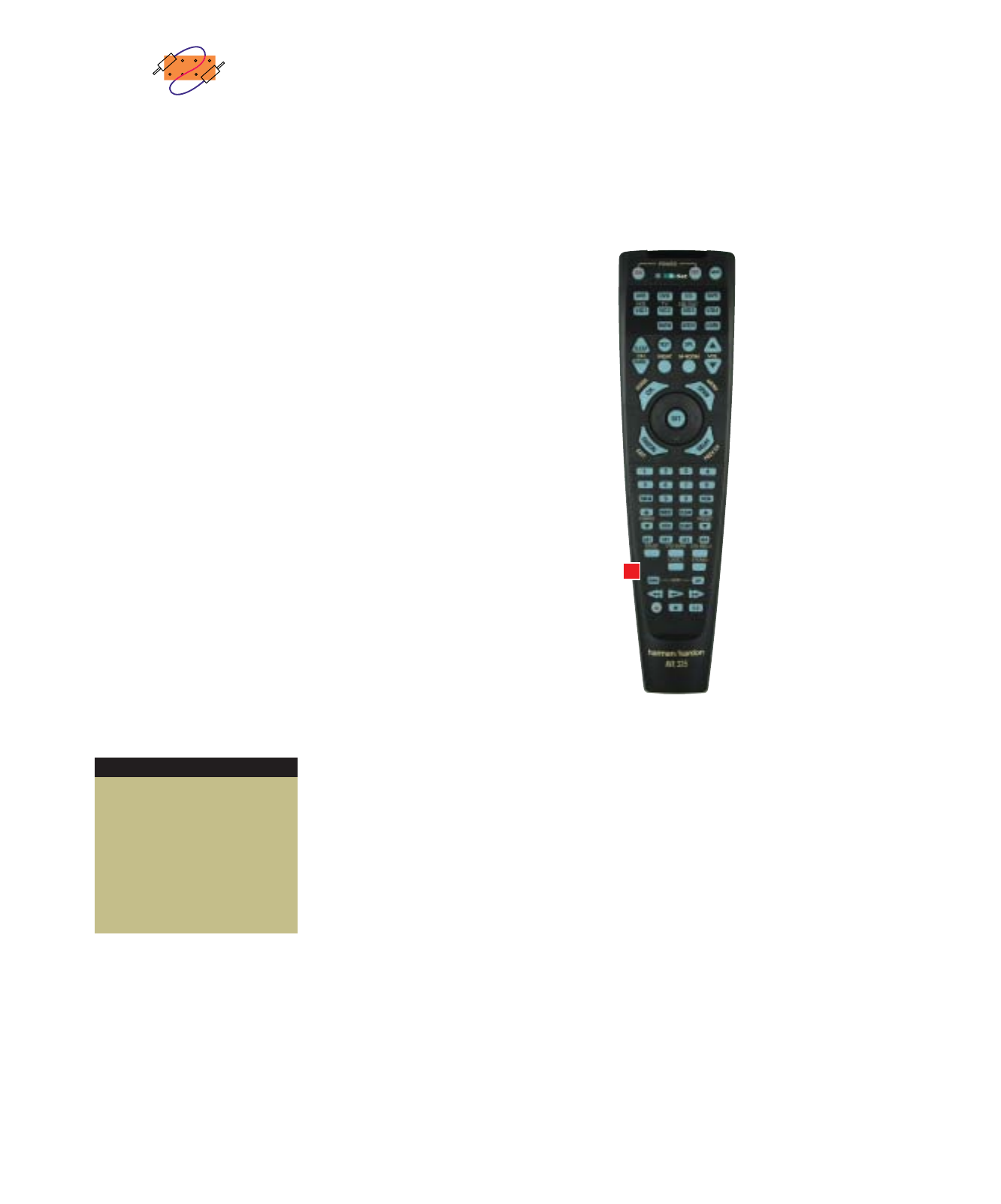
provides direct one-key access
to the Dolby, DTS, LOGIC7,
and stereo modes.
Harman/Kardon allows
advanced users to set the sub’s
crossover numerically, with sepa-
rate settings for the front, center,
side, and rear channels. The avail-
able settings are 40, 60, 80, 100,
120, and 200 Hz. You also have a
choice of small (which defaults to
100 Hz), large (full-range), or none.
For even more-advanced users,
Harman/Kardon allows each input
to receive a different crossover and
each surround mode to receive
separate level and delay settings.
Available surround modes include
Dolby Digital 5.1, Dolby EX, DTS,
DTS ES Matrix and Discrete,
DTS Neo:6 (with movie and music
modes), Dolby Pro Logic II (with
movie, music, and Pro Logic emu-
lation modes), 7.1-channel LOGIC7,
two-channel VMAx, and five- and
seven-channel stereo modes.
Harman/Kardon’s LOGIC7
mode is noteworthy. Like DPLII, it
sounds relatively neutral, preserv-
ing some of a stereo mix’s origi-
nal feel. Its three modes include
a movie mode that
derives 7.1 channels
of output from a
two-channel Dolby
Surround signal; a
music mode that
expands CDs and
other stereo sources
to 7.1 channels;
and a second music
mode, labeled enhance, that oper-
ates only when you set up the
receiver to power 5.1 channels.
According to Harman/Kardon,
the enhance mode adds additional
bass enhancement that circulates
low frequencies in the 40-to-120-Hz
range to the front and surround
speakers to deliver a less-localized
soundstage that sounds broader
and wider than when the subwoofer
is the sole source of bass energy.
Presumably, you’d only get the
full benefit if you ran
your front and surround
speakers full-range;
otherwise, your sub’s
crossover would limit
the effect.
The temptation to
blast all seven channels
in LOGIC7 with a fat
rhythm section was
almost overwhelming;
so, after some desultory
break-in listening, I fed
an Integra DPS-8.3 combi
player with Neil Young’s
Harvest DVD-Audio, ran
the speakers full-range,
and cranked up “Heart of
Gold.” Oops, the rear sur-
rounds were silent: I’d
forgotten that DVD-Audio
is a 5.1-channel format. I
switched to the two-channel
Dolby Surround soundtrack
and used LOGIC7 to expand it
to cover all seven speakers. The
receiver achieved a cruising alti-
tude of 75 decibels at the –20 point
of its volume range, which runs
from –80 to +4, and the sound was
nice and meaty, with some com-
pression but no nastiness.
When I switched the subs and
their crossovers back on, the same
volume setting got 85 dB out of
5.2 channels on Yes’ “Heart of the
Sunrise,” from the DVD-Audio ver-
sion of Fragile. As I expected, the
tonal balance turned bright: The
disc itself sounds that way, and the
receiver presented it truthfully.
Knowing that my faithful read-
ers will bay and howl for 7-point-
anything, I turned to the latest
DTS test disc, which includes
musical selections by Sheila
Nicholls (“Faith”) and Insane
Clown Posse (“Juggalo Homies”)
in DTS ES Discrete. In
the former track, man-
dolins and chorus
vocals came out of the
rear channels; in the
latter, guitar. This was
my first experience with
music in seven discrete
channels, but I remained
unconvinced. I loved the
rappers’ clown makeup,
though. I think Eminem
should try that.
At this point, my cat
came into the room
meowing, so I took a
break and brushed him.
Unfortunately, he only
purrs in mono. I briefly
considered getting another
half-dozen cats, plus a couple
of mountain lions for the bass
channels, but then I thought
about the litter box and dis-
missed the idea. Even with clump-
ing cat litter, I’d have to say no.
I spent an evening watching
the director’s cut of The Lord of
the Rings: The Fellowship of the
Ring in DTS ES Discrete, which
revealed a more-mature approach
to rear effects. At first, most of
the effects were subtle exten-
sions of the side channels. Not
until 20 minutes into the movie did
the first distinct rear effect crop
up, when the dragon’s head part
of the Hobbiton-fireworks scene
whooshed toward the back. As
the tension level rose, succeeding
scenes made more and more use
of the rear channels, particularly
during the panning effects at the
Harman/Kardon AVR 325 A/V Receiver
GEAR GUIDE
56
Home Theater/
June 2003 •
www.hometheatermag.com
• EzSet remote automatically
calibrates volume levels
• Better dynamics than you’d
expect from a 50-watts-
times-seven receiver
• A fairly neutral version of the
Harman/Kardon sound
HIGHLIGHTS
C. The remote is
both a learning and
preprogrammed
model with lots of
tiny buttons, several
of which provide
direct access to the
Dolby, DTS, LOGIC7,
and stereo modes.
C



